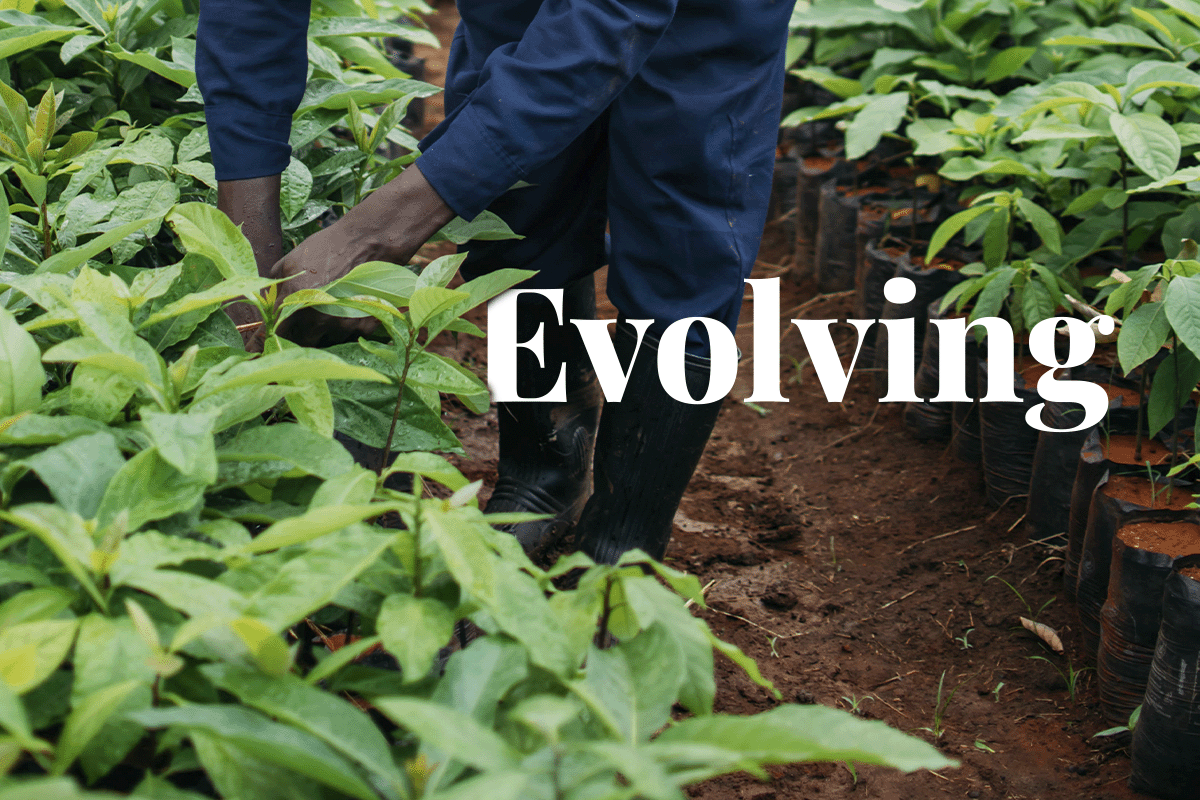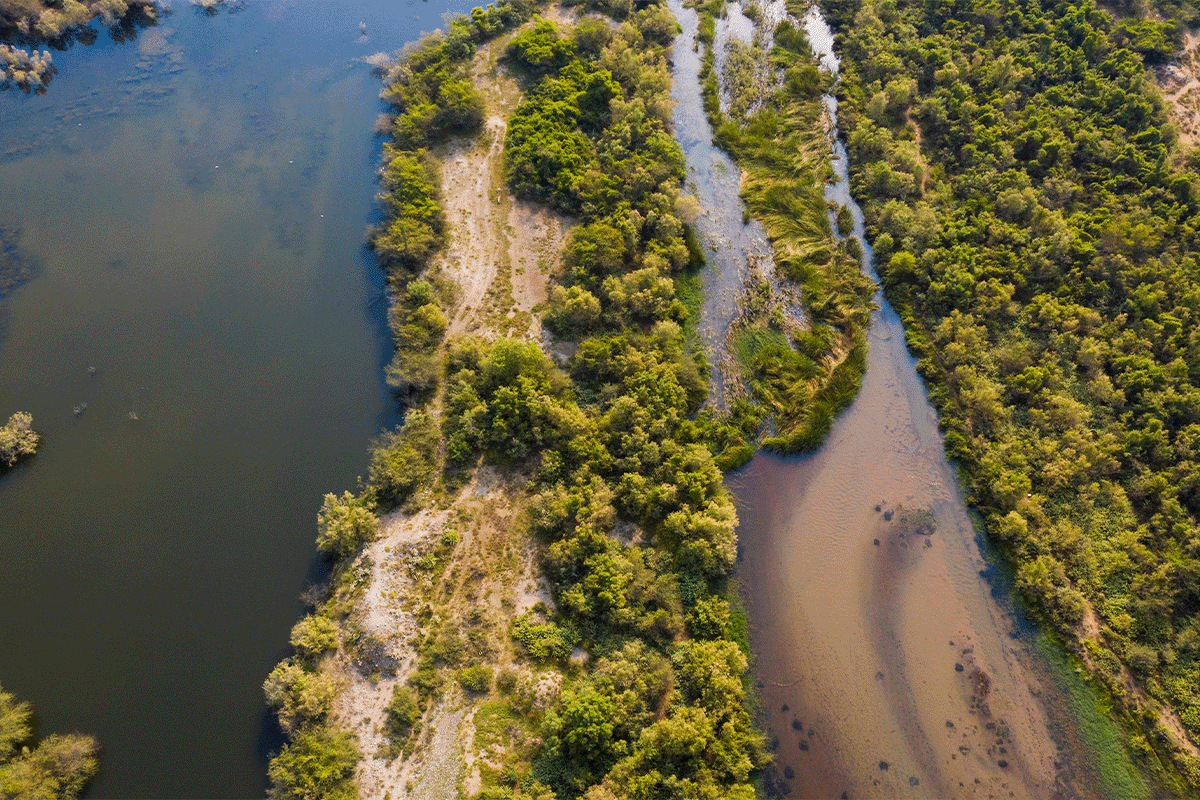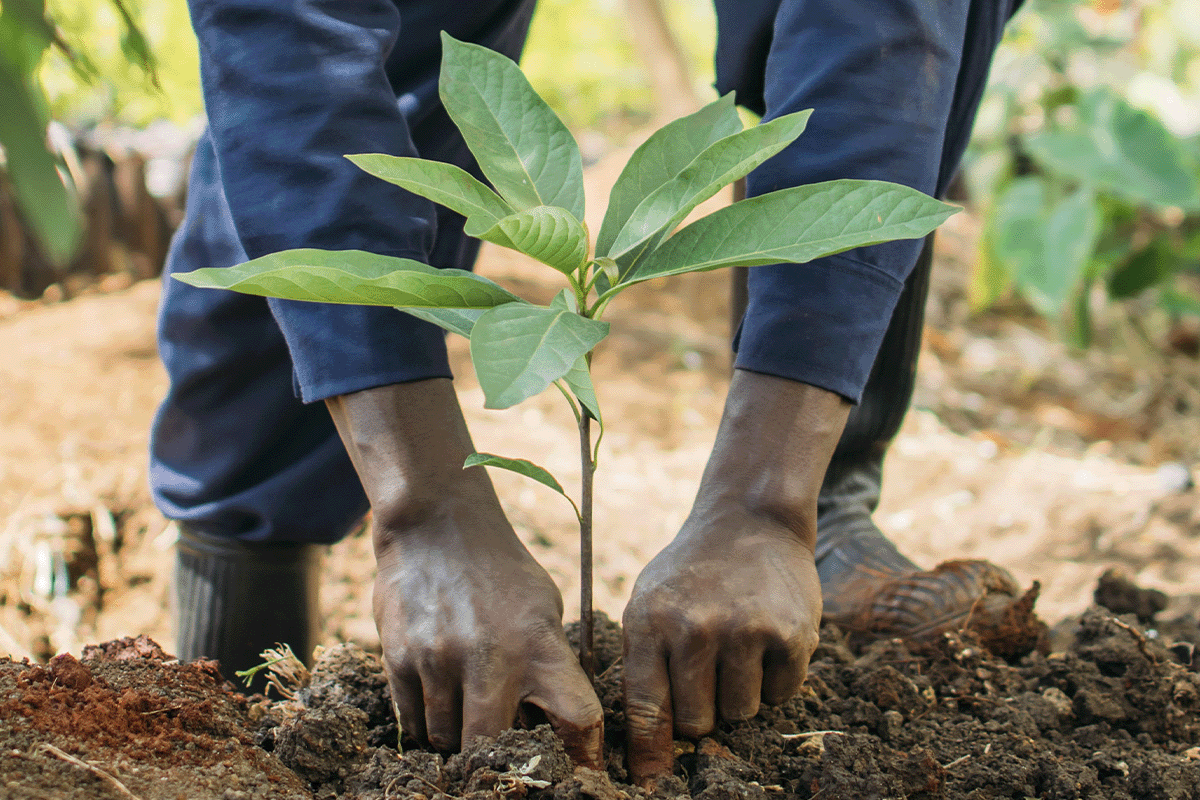Carbon markets have become a vital tool on the road to achieving net zero globally. Traditionally dominated by the private sector, these markets are transforming significantly as governments worldwide recognise their potential. More than two-thirds of countries are now planning to utilise carbon markets to fulfil their Nationally Determined Contributions (NDCs) under the Paris Agreement. This article delves into the countries actively participating in carbon markets, shedding light on their initiatives, digital infrastructure, and the potential impact on carbon emissions.
 A local tending a tree nursery in Kenya, Hongera Reforestation Project, DGB.
A local tending a tree nursery in Kenya, Hongera Reforestation Project, DGB.
The Paris Agreement’s Article 6: the game changer
The 2021 COP26 in Glasgow marked a significant milestone with the approval of Article 6 of the Paris Agreement. This approval ushered in a new era for carbon markets, allowing countries to trade carbon credits generated by carbon emission reductions or removals. These reductions could stem from shifts to renewable energy or nature-restoration efforts in carbon-rich ecosystems like forests.
Read more: How nature-based projects contribute to net-zero goals
As the urgency to reduce carbon emissions intensifies due to the escalating environmental impacts, carbon markets offer a cost-effective means of accelerating decarbonisation. The potential cost savings are substantial, with carbon credits estimated to reduce the expense of implementing NDCs by up to $250 billion by 2030.
The role of digital infrastructure
Crucial to the success of carbon markets is the digital infrastructure that ensures the secure storage and accurate tracking of verified data. Monitoring, Reporting, and Verification (MRV) systems, coupled with national or international registries, are central components of this digital infrastructure. These systems ensure transparency and accuracy in emissions data, which is crucial for carbon trading. Emerging technologies like blockchain further enhance transparency and ensure that carbon credits are claimed by only one country.
Read more: How are carbon credits issued?
Regional dynamics in carbon markets—global perspectives
While the Middle East and North Africa (MENA) region are emerging as key players in carbon markets, other regions around the world are also actively participating in the effort to conserve nature through carbon market initiatives. Let’s take a closer look at each region.
The MENA region’s growing role
 Aerial view of Qanona Valley, Saudi Arabia.
Aerial view of Qanona Valley, Saudi Arabia.
In the broader Middle East and North Africa (MENA) region, countries such as Saudi Arabia, Oman, the United Arab Emirates, and Bahrain, as well as nations in North Africa like Egypt, Morocco, Tunisia, and Algeria, have made substantial progress in adopting sustainable practices. They have collectively announced ambitious net-zero targets and established platforms such as the Riyadh Voluntary Exchange Platform to facilitate the trade of verified carbon credits produced within the region. These initiatives not only signify the growing importance of the MENA region in international carbon markets but also emphasise the region’s commitment to reducing global carbon emissions through collaborative efforts and its growing importance in the international carbon markets and its commitment to reducing global carbon emissions.
Read more: Ultimate guide to Africa’s 47 afforestation and reforestation projects
Europe’s carbon market leadership
Europe has long been a pioneer in carbon markets. The European Union Emissions Trading System (EU ETS) is one of the world’s largest and most established carbon trading platforms, playing a pivotal role in capping industrial emissions and enabling the trade of emission allowances. European nations continue to refine and expand their carbon market strategies, driving emissions reductions and environmental restoration and fostering innovation in clean technologies.
Asia’s rapid growth
 View on mountains under a mist, Jiangxi Province, China.
View on mountains under a mist, Jiangxi Province, China.
Asia, with its diverse economies, is experiencing rapid growth in carbon markets. China, in particular, has launched several pilot emissions trading systems (ETS) and is actively working to expand its national ETS. Japan, South Korea, and other Asian countries are also developing their own carbon market mechanisms. Asia’s commitment to carbon markets is essential given its significant contribution to global emissions.
Read more: Deforestation in Asia: a call for conservation
North America’s evolving landscape
North America is witnessing an evolving landscape in carbon markets. The United States is re-engaging with international environmental efforts and exploring carbon pricing mechanisms. Canada already has a federal carbon pricing system in place. Regional initiatives, such as the Western Climate Initiative (WCI), also facilitate emissions trading among provinces and states.
Read more: Deforestation in the United States: causes, consequences, and cures
Latin America’s sustainability initiatives
 Aerial view of Amazon forest and Negro River, Brazil.
Aerial view of Amazon forest and Negro River, Brazil.
Latin American countries are increasingly focusing on sustainability and emissions reduction. Countries like Chile and Brazil are investing in renewable energy projects and reforestation efforts, which can generate carbon credits for international trading. Their commitment to carbon markets aligns with their goals of environmental protection and economic development.
Read more: Deforestation in the Amazon Rainforest: causes, effects, solutions
Regional dynamics are interconnected in the global efforts for nature conservation. Cross-border collaboration in carbon markets is crucial to achieving emissions reduction targets. As countries and regions actively participate in carbon markets, they contribute to global emissions reduction efforts and create opportunities for innovative solutions to environmental issues.
Regional dynamics in carbon markets reflect a worldwide shift towards sustainability and emissions reduction. The MENA region, Europe, Asia, North America, and Latin America are all playing pivotal roles in shaping the future of carbon trading and environmental restoration. Their collective commitment to carbon markets highlights the global effort for nature and underscores the importance of international cooperation in achieving a more sustainable and carbon-neutral world.
The countries leading the way in carbon markets
In this section, we shine a spotlight on countries that are exemplifying the transformative potential of carbon markets in addressing environmental challenges and advancing sustainability goals. Explore the innovative strategies and initiatives undertaken by these nations, each contributing significantly to the global effort of reducing carbon emissions and fostering a sustainable future.
Country spotlight: Jordan
Jordan stands out as a pioneer in addressing environmental protection tactics through robust digital infrastructure. Despite facing formidable environmental challenges, including temperature increases, water scarcity, and energy demand spikes, Jordan has made significant strides. It became the first developing country to establish MRV and carbon registry systems in line with international standards, laying the foundation for emissions trading. Collaborating with the World Bank’s Climate Warehouse programme and the Partnership for Market Implementation (PMI), Jordan developed and tested this digital infrastructure.
 Valley of the Dead Sea, Jordan.
Valley of the Dead Sea, Jordan.
In preparation for its MRV system, Jordan enacted a bylaw in 2019, setting the stage for institutional and regulatory frameworks. The MRV system tracks emissions across sectors like energy, transport, and agriculture, aligning results with the country’s NDCs. Jordan’s open-source approach allows other interested nations to benefit from its software.
Jordan’s efforts continue with the formulation of a long-term, low-emission strategy and a 10-year National Energy Sector Strategy aimed at reducing carbon emissions. Expansion of the MRV system to 22 agencies and ministries under the Jordan Inclusive, Transparent, and Climate Responsive Investments Program For Results further strengthens the country’s environmental resilience.
Jordan’s pioneering MRV system has garnered international attention. The system is already being replicated for the West Bank, Gaza, and Sri Lanka with the Partnership for Market Readiness’ (PMR) support. Many countries across the Middle East, North Africa, Latin America, and Asia have expressed interest in adopting Jordan’s open-source MRV and registry systems.
Country spotlight: Chile
Chile has made substantial strides in leveraging carbon markets to address environmental challenges and achieve its NDCs under the Paris Agreement. The country is characterised by its diverse geography, which ranges from the Atacama Desert to lush forests. This diversity presents both challenges and opportunities in terms of carbon emissions and carbon sequestration.
 Araucaria forest in Conguillio National Park, Chile.
Araucaria forest in Conguillio National Park, Chile.
Chile has invested in state-of-the-art digital infrastructure to support its participation in international carbon markets. This includes robust MRV systems linked to national or international registries.
Chile has rapidly expanded its renewable energy capacity, particularly in solar and wind power. This transition has not only reduced carbon emissions but also made it an attractive destination for clean energy investments.
The country’s vast forests play a critical role in sequestering carbon. Chile has implemented initiatives to conserve and restore these ecosystems, contributing to carbon credit generation through afforestation and reforestation projects.
Water scarcity is a pressing issue in Chile, exacerbated by natural crises. The country’s efforts to address this challenge include sustainable water management and reducing water-intensive industries. Transitioning Chile’s energy-intensive mining industry to cleaner energy sources is a complex task but holds significant emissions reduction potential.
Chile’s leadership in carbon markets positions it as a key player in the global effort to support the natural environment. The country’s commitment to renewable energy and forest conservation aligns with its pursuit of sustainable and low-carbon economic growth.
Country spotlight: Singapore
Singapore, despite its small size, has emerged as a leader in carbon markets through innovative digital solutions and strategic policies.
 View from Henderson Wave, Singapore.
View from Henderson Wave, Singapore.
Singapore has developed an end-to-end, state-of-the-art digital infrastructure to support its participation in international carbon markets. This includes advanced MRV systems and a secure registry, ensuring the integrity of emissions data. The city-state has invested in cutting-edge technologies to improve energy efficiency and reduce emissions. These innovations are applied across various sectors, including transportation, industry, and urban planning.
Singapore’s position as a global financial hub has allowed it to facilitate carbon credit trading and attract investment in sustainable projects. It serves as a bridge between carbon markets in Asia and the rest of the world.
Although Singapore has limited land area for renewable energy projects and emissions reduction initiatives, it focuses on maximising the efficiency of its infrastructure and urban planning.
Singapore’s proactive approach to carbon markets exemplifies its commitment to addressing environmental concerns despite its unique challenges. Its focus on technological innovation, financial expertise, and sustainable urban development underscores its role as a model for other nations aiming to navigate the transition to a low-carbon economy.
These country spotlights showcase the diverse strategies and challenges that countries face as they actively engage in carbon markets to support nature. Each nation’s unique circumstances and initiatives contribute to the collective effort to reduce global carbon emissions and restore our environment.
The expanding landscape of emissions trading
Emissions trading systems are increasing globally, with national or subnational systems operating or under development in various countries, including Canada, China, Japan, New Zealand, South Korea, Switzerland, and the United States. This expansion reflects the increasing recognition of the benefits of carbon markets in achieving environmental goals.
Read more: Carbon pricing: global solutions for a global challenge
The potential of international carbon markets
International carbon markets hold immense potential for cost-effective emissions reductions and incentivising decarbonisation. Under the Paris Agreement, Article 6 provides a framework for countries to engage in emission allowance trading, establish robust accounting rules, and create ambitious market mechanisms. This framework, together with international cooperation, is essential in achieving collective environmental targets and establishing carbon markets as the driving force behind environmental restoration.
Bilateral and multilateral cooperation
Several countries have embarked on bilateral and multilateral initiatives to advance carbon markets. For example, the European Commission has collaborated closely with China to support emissions trading systems, while Korea launched its emissions trading system in 2015, covering a substantial portion of its emissions.
Additionally, the European Commission plays a pivotal role in the International Carbon Action Partnership (ICAP), fostering knowledge sharing and training on cap-and-trade systems. The PMR further supports the development of domestic carbon markets in multiple countries.
Linking emissions trading systems
Linking compatible emissions trading systems offers numerous advantages, including cost reduction, increased market liquidity, and stability in carbon pricing. The EU ETS has provisions for linking with other compatible systems, provided certain conditions are met. For example, the EU has linked its system with Switzerland’s ETS, allowing mutual recognition of emission allowances.
DGB Group: supporting global players on the road to net zero
The review of regions and countries participating in carbon markets illustrates a global shift towards embracing these markets as vital tools in the battle for a greener planet. With Article 6 of the Paris Agreement now in play, countries are gearing up to trade carbon credits, reduce costs, and accelerate decarbonisation. As more countries commit to net-zero emissions, the role of carbon markets in achieving collective nature-positive goals becomes increasingly prominent. International cooperation and linking emissions trading systems further enhance the potential of these markets to drive effective and efficient emissions reductions worldwide.
DGB Group is committed to a greener and more sustainable future, and as part of our dedication to this vision, we employ a comprehensive approach. Our commitment goes beyond just championing biodiversity restoration and ecosystem preservation; we are actively contributing to the global journey towards net-zero emissions.
 Close-up of a local working in a tree nursery in Kenya, Hongera Reforestation Project, DGB.
Close-up of a local working in a tree nursery in Kenya, Hongera Reforestation Project, DGB.
Our nature-based initiatives offer a multitude of benefits for the environment and the communities we engage with. These initiatives involve restoring previously degraded lands, which not only aids in restoring fragile ecosystems but also provides safe havens for diverse wildlife, thereby enhancing overall biodiversity. Moreover, we are deeply involved in empowering local communities through various initiatives, including distributing energy-efficient cookstoves and implementing comprehensive training programmes. These efforts improve the wellbeing of local communities and promote sustainable practices.
At the core of DGB’s mission lies a steadfast commitment to sustainable strategies that are in harmony with the preservation of nature and play a pivotal role in supporting global initiatives for net zero. This seamless integration of ecological restoration and our contributions to the net-zero journey is shaping a future where nature thrives alongside sustainability, ushering in a greener, more biodiverse world.
Start taking positive steps for nature
- SEO Powered Content & PR Distribution. Get Amplified Today.
- PlatoData.Network Vertical Generative Ai. Empower Yourself. Access Here.
- PlatoAiStream. Web3 Intelligence. Knowledge Amplified. Access Here.
- PlatoESG. Carbon, CleanTech, Energy, Environment, Solar, Waste Management. Access Here.
- PlatoHealth. Biotech and Clinical Trials Intelligence. Access Here.
- Source: https://www.green.earth/blog/key-players-in-evolving-carbon-markets



